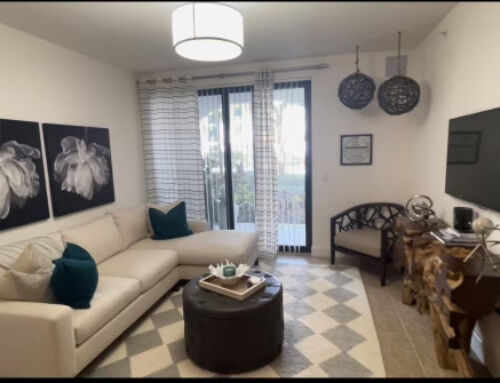By Tovio Roberts Tutor, CLE Denver
I was a crammer in school. I would binge study for days before finals then collapse in exhaustion and disdain. In the downtime afterward, I would seek solace in role-playing video games, where I was free to explore landscapes and caves with my little band of adventurers or spend hours getting into battles with easy enemies in order to increase my experience points, amass gold and buy better weapons and armor.
The Downside of Cramming
In college, I began seeing cramming for a test as akin to frantically building a skyscraper out of matchsticks. Once a test is over, students burn that building to the ground and sweep the ashes into the gutter. As much as I may discourage this tendency in the students I work with, I find that most of them default to binge-cram behavior and, predictably, end up forgetting the majority of the studied information shortly following the exam. Since the material was just for use on the test, it was pragmatically expunged by their considerate brains. Although tempted to write a scathing critique of quantitative grading at this point, I will instead propose a strategy to save study time, deepen retention of material, and improve academic performance.
A Better Way to Study
Spaced-repetition study is an excellent way to curb the cram. The practice of spaced-repetition spreads review of materials out over a longer time period. For example, instead of studying two-hundred flashcards for four hours straight before an exam, one is much better served by studying twenty new flashcards for ten minutes and reviewing the previous days’ flashcards for another ten minutes, daily for ten days leading up to the exam. In spaced-repetition, the time spent reviewing is shortened so the task feels less insurmountable. The student is allowed to “forget” the material between study sessions, which can have the positive effect of reducing anxiety about tests and homework. Forgetting and remembering deepens paths from working memory to long-term memory, thus making materials easier to recall in the long run.
For a more scholarly exploration of spaced-repetition, check out this 2016 article: https://www.dartmouth.edu/~cogedlab/pubs/Kang(2016,PIBBS).pdf
Anki, Friendly Flashcard App
Physical flash cards are great, but there are many digital alternatives. Anki is my choice and recommendation for a spaced-repetition program. I began using it over ten years ago as a tool to memorize vocabulary in Arabic and Portuguese. I have since expanded my “decks” to include topics to be prepped for working with neurodiverse students. The subjects range from data structures in computer science and bones of the human skeleton, to integrals in Calculus and English vocabulary. I share the decks and notice that when a student allots daily time to Anki, their academic success improves markedly.
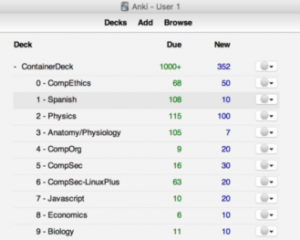
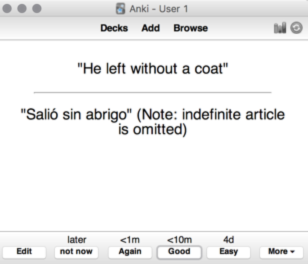
With Anki’s built-in self-assessment, a student can ensure that they are not reviewing what they already know. Cards are easy to add and edit and one can embed images and audio into the cards they create. There is a large web and support community, as well as a free cloud backup service at https://apps.ankiweb.net/. I prefer the desktop version of Anki, but there are app versions for Android and iOS.
Habitica, Turn Tasks into a Game
Remember those RPG video games I used to play? Well, I still play them, as do many of the students I work with. These days, I’m more into the designing and programming of such games, but I still enjoy going to the digital mountains and slicing up slimes with my broadsword. Three years ago a friend introduced an app that turns task lists into a role playing game. Habitica has a simple interface for organizing habits, daily tasks, and long-term goals in a flexible and customizable format. As a player, one gains experience by taking care of their life in the “real world.” In the digital realm, one collects weapons, armor and pets, levels up, and goes on quests.
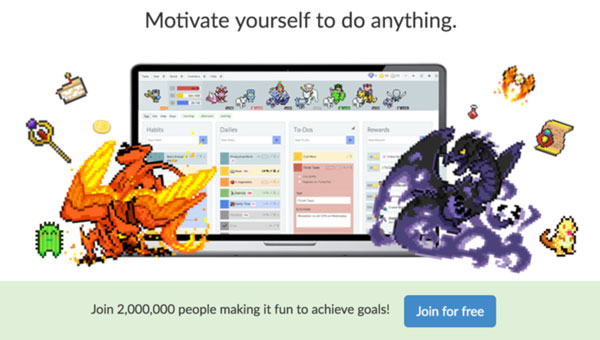
I remember my life before Habitica. I was swimming through an existential sea of paper lists and self-aimed text messages. Since Habitica, I slay daily tasks and go on quests to defeat looming projects. I also dress up my avatar in costumes to reflect current trends in 8-bit fashion.
As you can see, I am a level 168 Mage riding a phoenix. I have a group of friends who are part of our party: The Shadow Mnemonists.
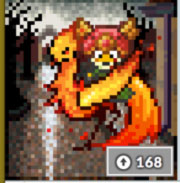

Integration of Anki and Habitica: The Gamification
The outmoded perspective that it is only through steadfast, martyring discipline that one may find success in academia is falling by the wayside as gamification becomes more and more legitimized in education.
I love games. I am bettered through study. When I put the two together, I am bettered through games. Imagine my delight when I found out that Anki and Habitica can work together! A small add-on in Anki will gain Experience for my Mage in Habitica. I am thus motivated to study by the preservation and leveling-up of my avatar. I am held accountable by my friends in the questing party. I have found that some of my students are dramatically more driven by the same tool combination as the elements of incremental success and collection turn their task lists into a noble quest.
To be clear, this is not a panacea. It is a recipe that works for some students and not others. As dynamic educators of a neurodiverse population, we explore and implement various tools and, through trial and error, find what works for whom. If you, your student or your child likes games, especially RPGs with elements of collection, check out this easy tutorial I made for setting up Anki, Habitica and bringing the two together at http://mnemonosomatic.org/recipe-gamified-flash-cards.

